More than 30 years ago I was high in the alpine zone of Mount Kilimanjaro in Tanzania, when I came across a tiny, pink-flowered bulb, standing just a few centimetres above the dry soil. It was Hesperantha petitiana, the northernmost representative of a genus of more than 80 species, the majority of which are endemic to the winter-rainfall areas of southern Africa’s Western Cape, where the commoner species can sometimes be found in enormous numbers.
Jump to
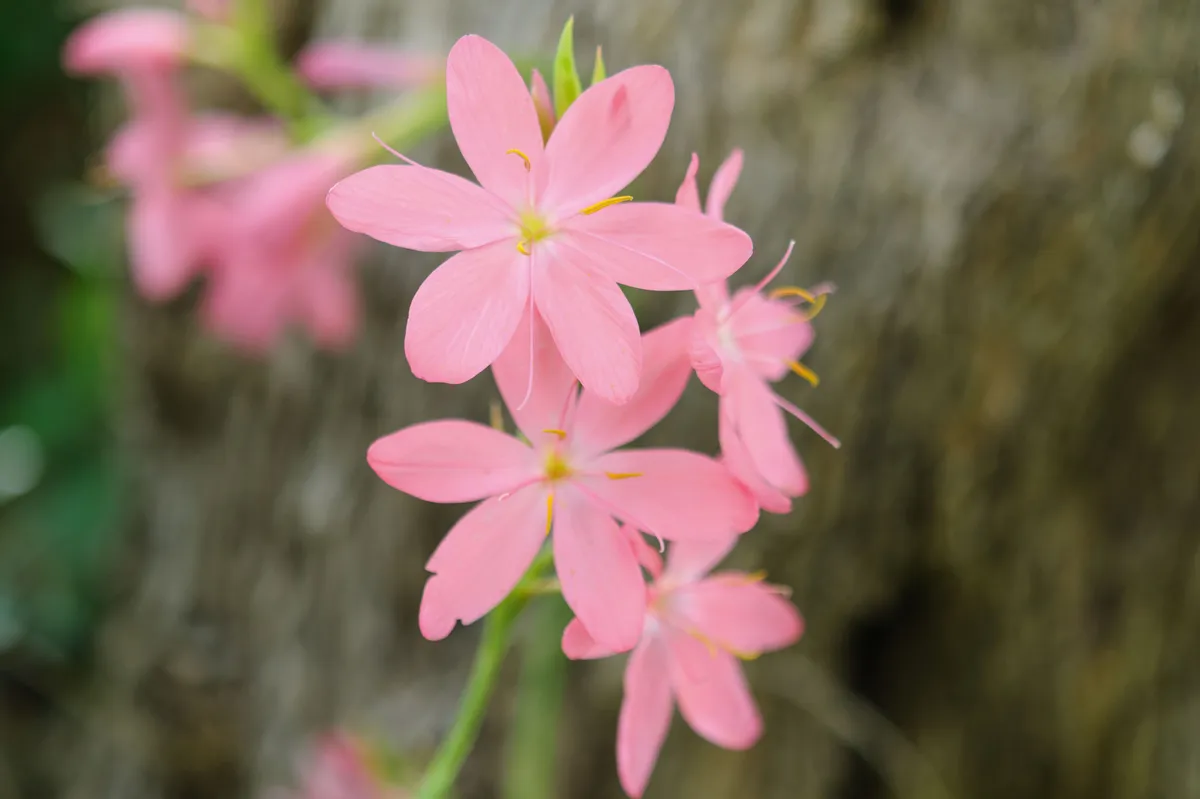
What are Hesperantha?
For the majority of gardeners, however, Hesperantha means just one species, the large and splendid Hesperantha coccinea, which is something of an anomaly in the genus and indeed was long-placed as the single species of the genus Schizostylis. It comes from another centre of diversity in the genus, the Drakensberg range of eastern South Africa, where about 14 species occur. Most are summer-flowering, opening their pink flowers in the daytime; of this group only Hesperantha baurii and Hesperantha huttonii are in cultivation. Like the Western Cape species they grow from corms, renewed each year, with the plants undergoing seasonal dormancy in the cold, dry winter. In the wild, their habitats are usually damp in summer, and this is preferred in cultivation.
How to grow Hesperantha
When to plant Hesperantha
Best grown from seed sown in late summer. Supplemental lighting is beneficial in dull weather. In their wild habitat, they mostly flower from August to September. In the wild, where its range stretches throughout the mountains of eastern South Africa into Zimbabwe, Hesperantha coccinea seems almost invariably to grow alongside streams, often threading its stolons through cushions of wet moss. Fortunately, the requirement for running water doesn’t extend to gardens, where Hesperantha coccinea will grow in any reasonable soil, almost anywhere in the UK and Ireland. Its great value is its predominantly autumn-flowering period, producing spikes of beautiful satiny flowers over a long season from August into winter: if there is no frost they may go on into December and even January.
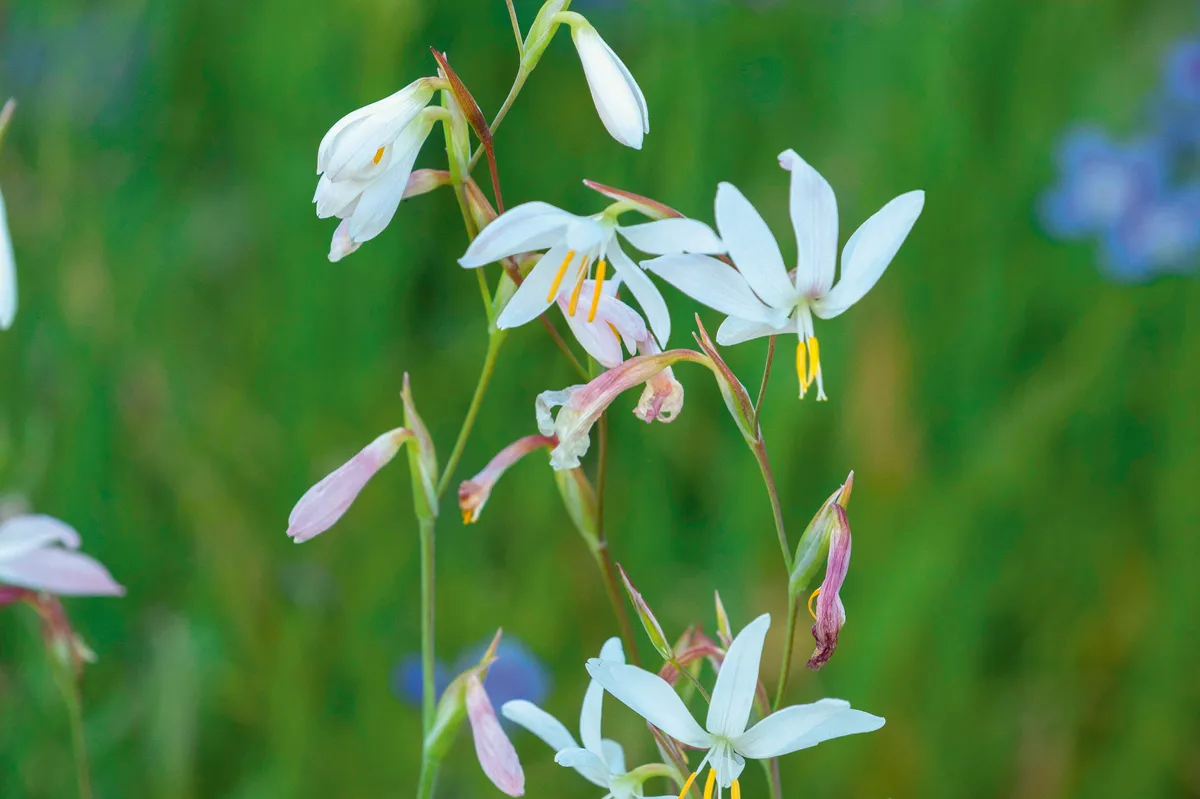
Where to grow Hesperantha
Hesperantha coccinea is best grown in rich, moist conditions in full sun. It can survive in even quite dry places but will not perform well. The eventual height of most cultivars will vary depending on the growing conditions. Give these plants a sunny, well-drained position on a rock garden. Standing only 15-30cm high they should not be swamped by taller plants.
Dividing Hesperantha
For best results, lift, divide and replant tired clumps into enriched soil every two to three years, and mulch with good compost. The stoloniferous habit can take plants beyond their bounds, and pieces will remain when clumps are lifted. Weed these out by hand if necessary. Tatty, overwintered foliage can be sheared or strimmed off in spring prior to mulching.
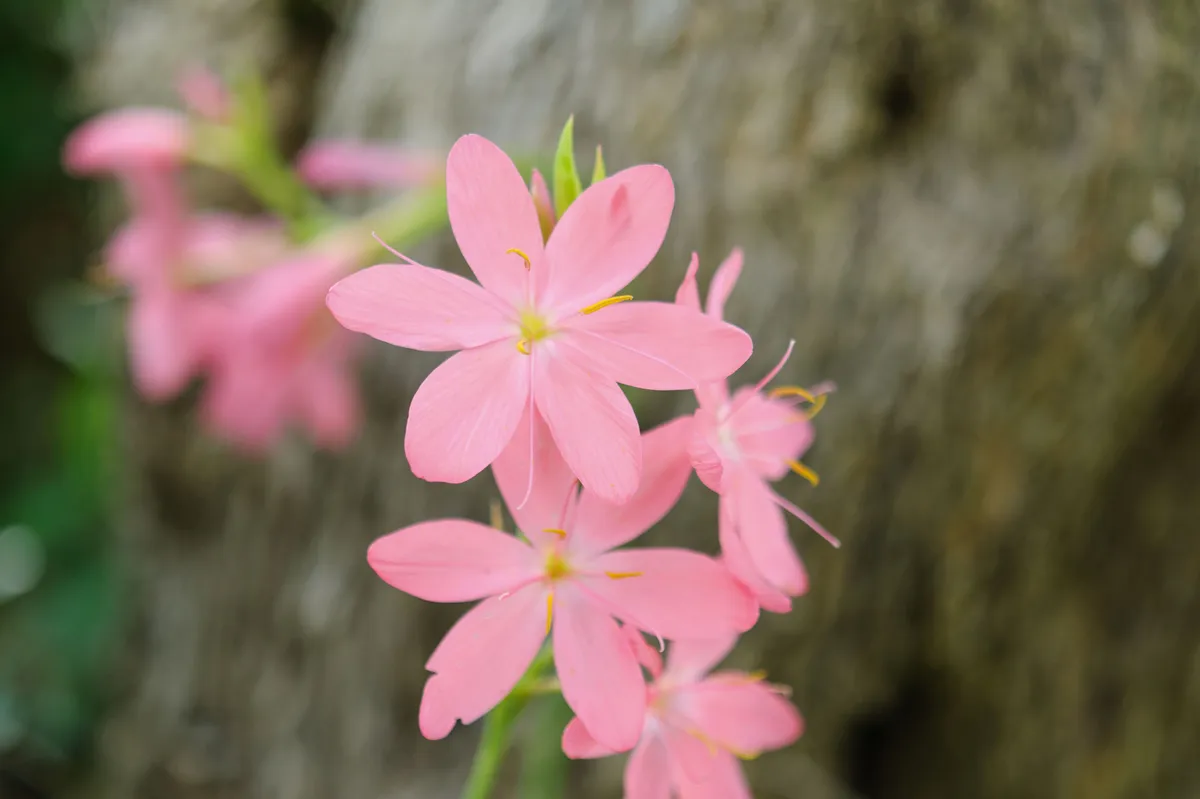
Protecting Hesperantha over winter
In really cold areas adding a thick mulch in late autumn will be beneficial, but in the current climate Hesperantha coccinea is generally hardy in the UK and Ireland and the milder parts of western Europe and western North America.
The winter-growing species from the Western Cape, such as Hesperantha vaginata and Hesperantha pauciflora, are more challenging. They need frost-free, cool but well-ventilated, bright conditions, in a well-drained gritty compost, kept moist in winter but dry in summer.
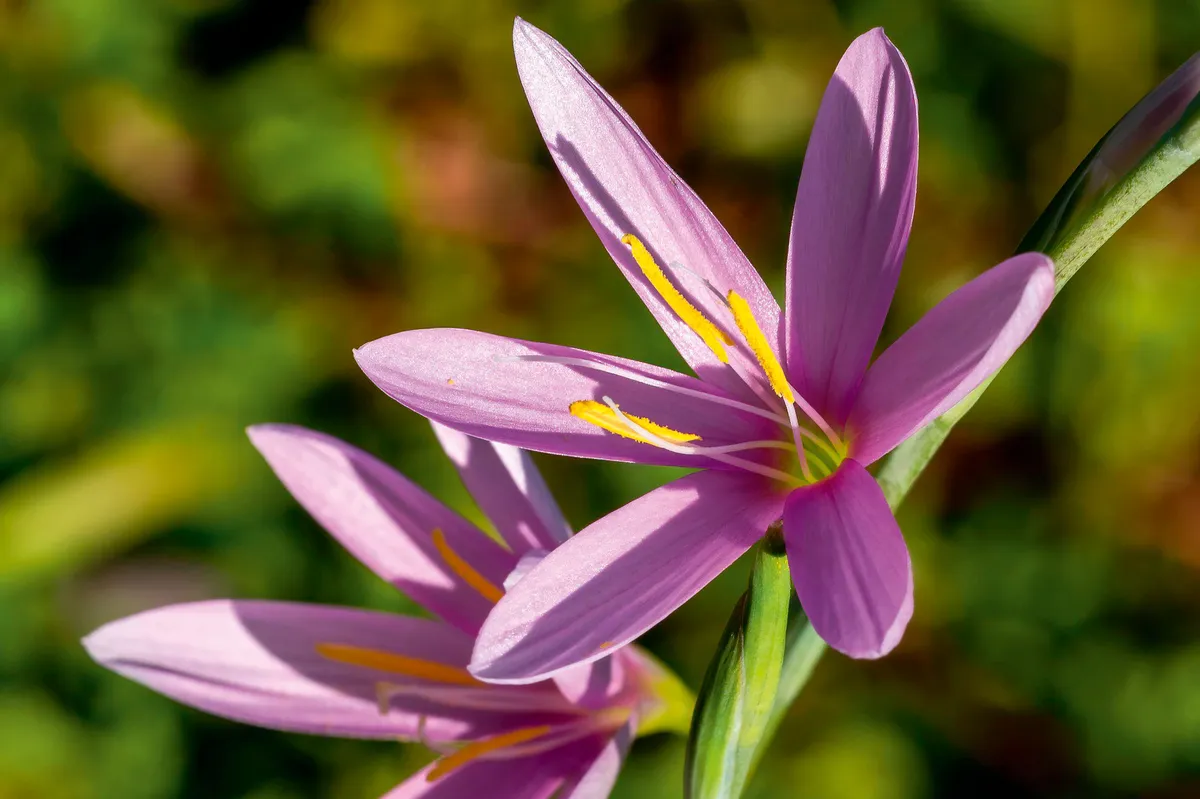
Hesperantha pests and diseases
Pests and diseases are unusual in hesperanthas, but virus can cause streaking in the flowers.
The best Hesperantha to grow
Hesperantha coccinea ‘Major’

The best red-flowered cultivar – perhaps the best of all – but there is some variation in its stocks. The 6cm rounded flowers of rich, almost coppery red, have a beautiful sheen that catches the sun. 50cm x 30cm. AGM. RHS H4, USDA 7a-9b.
Hesperantha coccinea ‘Alba’
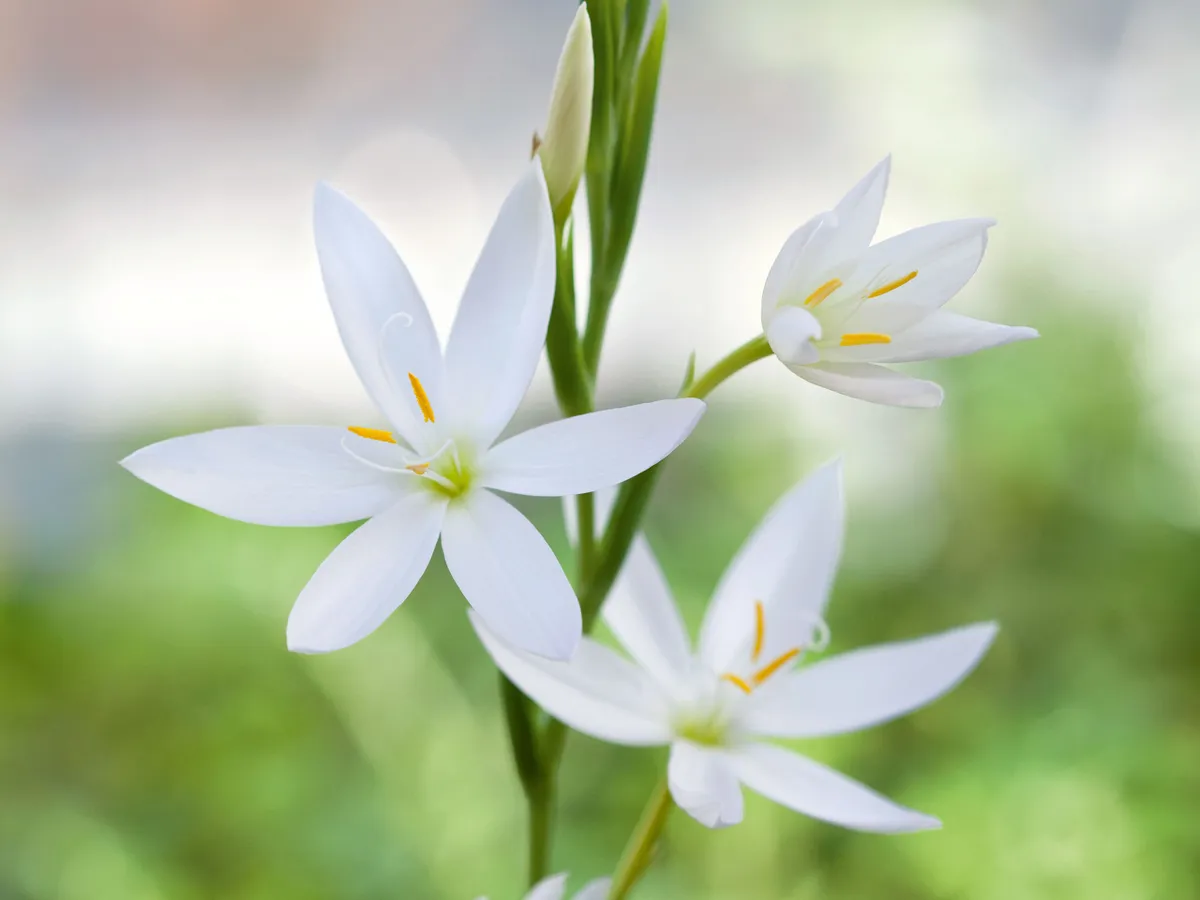
A number of white clones of Hesperantha coccinea are in cultivation, varying in the size and shape of the flowers: this one has very pointed segments. Looks wonderful when planted in large drifts in the garden. 50cm x 40cm. RHS H4,
USDA 7a-9b.
Hesperantha coccinea ‘Cindy Towe’
A deep-red cultivar with pointed segments, starting to flower in July or August. It was selected from a seedling in the garden of June Towe in Herefordshire, and named after her dog. 60cm x 45cm. RHS H4, USDA 7a-9b.
Hesperantha coccinea ‘Rosea’
Pink-flowered forms of Hesperantha coccinea are common in South Africa, but are often quite pallid. This cultivar, however, is more richly coloured, and is said to be free-flowering. 50cm x 30cm. RHS H4, USDA 7a-9b.
Hesperantha coccinea ‘Jennifer’
An extremely large-flowered cultivar; its flowers are up to 6cm across, with rounded segments in pale pink, paler at the centre of the flower. It is vigorous and needs regular division. 50cm x 30cm. AGM. RHS H4, USDA 7a-9b.
Hesperantha huttonii
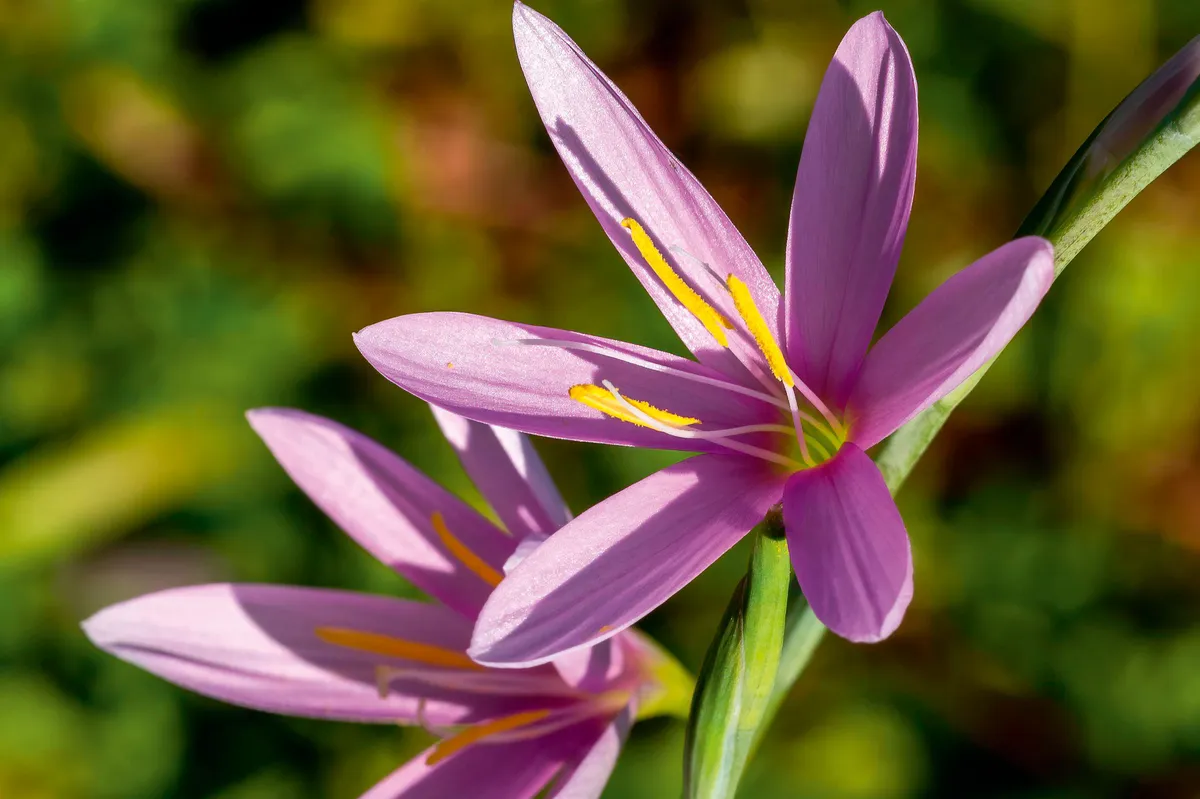
A hardy summer-flowering species that is generally found growing on cliffs and in forest clearings and alongside rivers in the Eastern Cape mountains. Useful for a rock garden or the front of a border, where it may gently self-seed. 15-30cm x 15cm.
Hesperantha vaginata
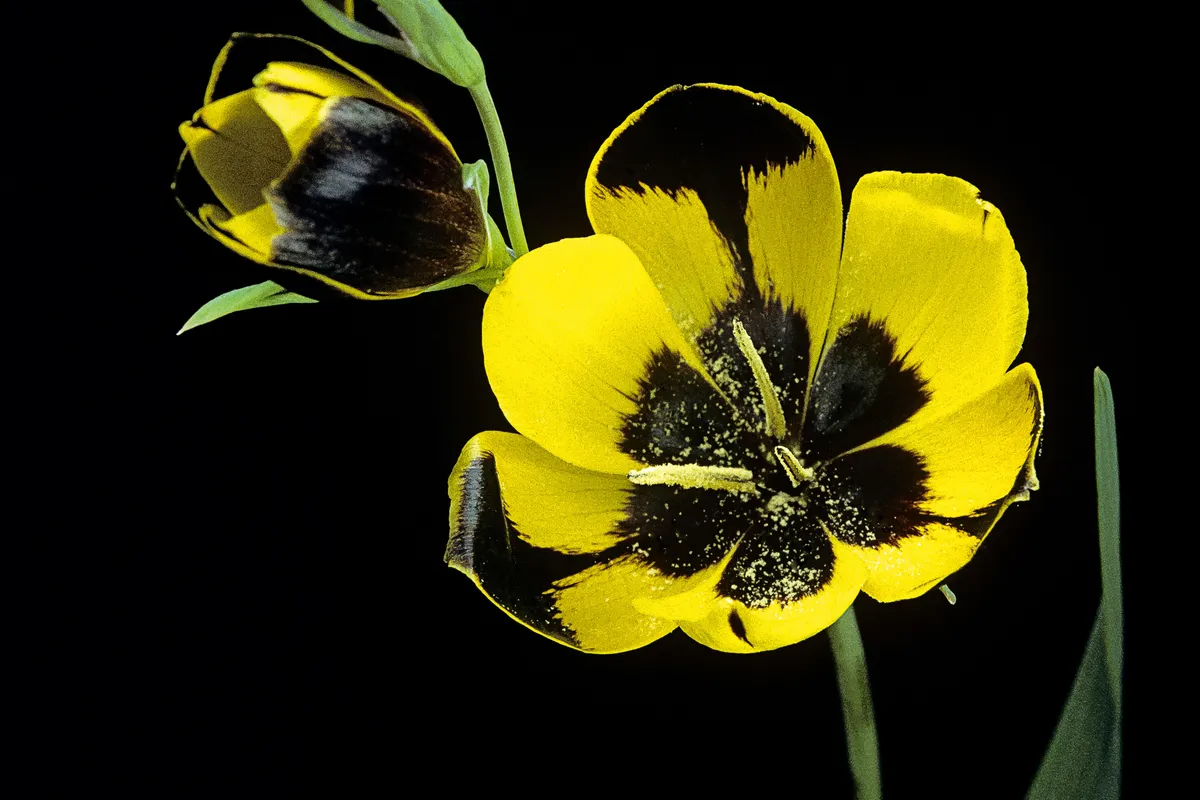
Its striking colour attracts pollinating beetles, mimicking other similarly patterned flowers native to Namaqualand. It is a winter-growing species, flowering in the southern African spring, and challenging in cultivation. 20cm x 3cm.
Hesperantha coccinea ‘Oregon Sunset’
A particularly tall clone, with rich-pink flowers, selected by the Oregon nursery Gossler Farms; Hesperantha coccinea is happy on the west coast of North America. 60-80cm x 35cm. RHS H4, USDA 7a-9b.
Hesperantha coccinea ‘Pink Princess’
The pinkness of this cultivar is best seen in bud as it opens to almost white. The yellow-green ovary in the centre of the flower is quite conspicuous. 60cm x 30cm. AGM. RHS H4, USDA 7a-9b.
Hesperantha coccinea ‘Mollie Gould’

A cultivar that is noted both for its long-flowering season and its greater than average height. The pink flowers have a darker central streak. 50cm x 35cm. RHS H4, USDA 7a-9b.
Hesperantha coccinea ‘Sunrise’

Free-flowering and rather late, often still blooming at Christmas, this has large, rich-pink flowers standing up well above the foliage. 50-60cm x 30cm. AGM. RHS H4, USDA 7a-9b.
Hesperantha cucullata
Endemic across the Cape Provinces, this species occurs in large numbers in Namaqualand. In late afternoon its pink buds open to white flowers, with the intermediate stage being exceptionally pretty. 30cm x 60cm. USDA 9a-10.
Hesperantha bachmannii

Found in the Western Cape Province, including Namaqualand. Its fragrant flowers hang downwards with reflexed segments, giving a very unusual look for this genus. Like all the winter-rainfall species it can be challenging to grow. 25cm x 2cm.
What to combine with Hesperantha
Hesperanthas work well in the garden when combined with other plants. Weave Hesperantha coccinea among early flowering plants to provide late-season interest, perhaps over a clump of daffodils or around an iris in wetter places. In my dry garden it’s not very happy, but a patch of the rich-red (neither scarlet nor crimson is probably the best description) Hesperantha coccinea ‘Major’ often manages a few stems to complement the late-flowering, soft yellow Crocosmia ‘Ellenbank Canary’ and blue-mauve Symphyotrichum ‘Little Carlow’ behind. White or pale-pink cultivars can look good with the darker colchicums, and the foliage of each can fight it out in spring.
A well-nourished row of Hesperantha coccinea in a cutting garden will provide a long season of flowers into late autumn or early winter; robust corms could be planted in a large pot for late-season conservatory decoration. Remove seedheads if not frosted to avoid seedlings getting in among named selections.
Where to buy and see Hesperantha
- Beth Chatto’s Plants & Gardens Clacton Road, Elmstead Market, Elmstead, Colchester, Essex CO7 7DB. Tel 01206 822007, bethchatto.co.uk
- Burncoose Nurseries Gwennap, Redruth, Cornwall TR16 6BJ. Tel 01209 860316, burncoose.co.uk
- Farmyard Nurseries Dol Llan Road, Llandysul, Carmarthenshire SA44 4RL. Tel 01559 363389, farmyardnurseries.co.uk
- RHS Garden Rosemoor Great Torrington, Devon EX38 8PH.Tel 01805 624067, rhs.org.uk/gardens/rosemoor